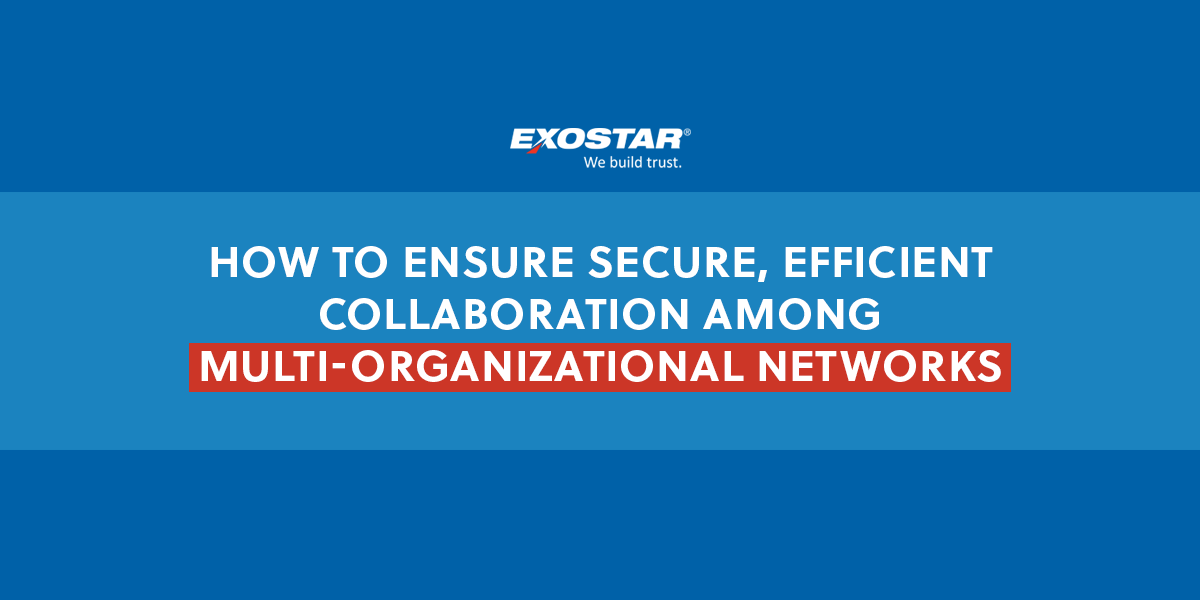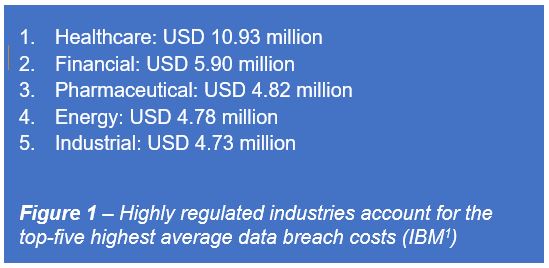Blog
How to Ensure Secure, Efficient Collaboration Among Multi-Organizational Networks

Note to readers:
This post is based on insights from the white paper by analysts at KuppingerCole, “Streamlining Identity Access Across Multi-Organizations and Supply Chain” which you can download here.
In a world where organizations are increasingly sharing sensitive data across their supplier networks, we are witnessing a surge in cyber threats. Today’s organizations face a complex challenge when protecting sensitive data – especially in highly regulated industries, where we find the highest risk and costs when analyzing data breaches. (see figure 1)

When advising how an organization can reduce risk, we commonly find that people related security controls are amongst the most common attack vectors, including phishing and stolen / compromised credentials (16% and 15% of attacks, respectively).
The good news is that Identity and Access Management (IAM) technology provides the tools needed to enhance an organization’s supply chain security and address these risks whilst also improving productivity.
What is Identity and Access Management (IAM)?
IAM defines a series of centralized controls focused on managing digital identities and safeguarding an organization’s sensitive information, systems and assets from unauthorized access and security threats.
Implemented well, an IAM platform ensures a consistent set of policies, processes and technologies which manage and control an individual’s access to an organization’s digital resources. IAM’s primary goal is to ensure that the right people have the right level of access to the right resources at the right time, all whilst ensuring high levels of security and compliance with minimized risk.
What are the core capabilities required to secure and manage access across multi-organization networks?
A strong IAM solution will manage:
– User Identification and Onboarding: establishing the identity of users or entities seeking access to resources and providing a high level of assurance that access privileges are associated with the right person. Services may include digital customer onboarding, identity proofing or delegated administration / invitation management.
– Authentication: verifying the user’s identity during each access attempt. This may include strong authentication and password-less access (including support for emerging standards, such as FIDO2 and passkeys).
– Authorization: determining what resources a user is allowed to access and the actions they can perform. An organization’s authorization policies may be based on user roles and group memberships, as well as persona-based policies. Ideally authorization should occur in real-time, taking into consideration user behavior and their session context (for example, logging in from a foreign state).
– Provisioning and Lifecycle Management: automating and enforcing user access controls. This includes provisioning (granting access), de-provisioning (revoking access), and managing user permissions and entitlements. Provisioning processes should be tightly coupled with other people data sources in an organization (for example, your HR and helpdesk systems), this enables organizations to implement a closed loop set of continuous controls which automatically administer your joiner, mover and leaver processes.
– Single Sign-On (SSO): enabling users to log in once and gain access to multiple applications without the need to re-enter their credentials. This enhances user experience and productivity whilst reducing risk and the number of credentials users need to remember.
– Access Governance, Audit and Compliance: continuous controls ensure that a user’s access stays current and in line with corporate policy. Auditing and reporting will enable your organization to track user activity and access patterns. Access governance capabilities (including approval processes and certification campaigns) are crucial when ensuring compliance with regulations and internal policies, as well reducing the risk of security breaches.
How is IAM different in multi-organizational networks?
For many organizations, security becomes more complex when partners and third-party collaborators are involved. Supply chain risk is a common theme in today’s world (especially as recent regulation, such as the Digital Operational Resilience Act (DORA) or Australia’s CPS 230 highlight the risks and ongoing need for controls). A modern IAM solution supports an organization’s need to collaborate, share resources, or integrate systems whilst maintaining a strong security posture.
The rise of multi-organization networks has meant that collaboration has spread across many different companies, third party users and organizations that make up modern supply chains. Managing access and keeping systems secure is a major challenge, especially in highly regulated industries such as banking, financial services, healthcare, government, and defense.
A multi-organization approach to security should build on IAM’s core capabilities and provide enhanced services such as user journey orchestration alongside services for governance, risk and compliance (GRC).
By centralizing and unifying access control, organizations can reduce costs and the onboarding time for suppliers and partners. As organizations build industry communities, the ability for partners to securely collaborate benefits both businesses and economies across the world.
Introducing Exostar Access: One
Exostar Access: One provides a comprehensive set of capabilities for securing multi-organization networks. Some of the most appreciated aspects of Access: One include ease of custom branding, user journey orchestration, no-code integration and the rapid delivery of IAM services tailored for high assurance use cases in highly regulated industries.
The platform incorporates compliance and audit features that help organizations easily meet regulatory requirements and enforce internal policies. Governance capabilities including multi-tier access approval (including cross-organization, delegated, administration) and access certification ensure ongoing security controls whilst advanced authentication, authorization and access management services ensure people are always productive and secure.
The platform easily enables resilient and versatile services for access management, administration and governance. Delivered as a service, it enables highly regulated organizations to easily implement and introduce secure IAM services supporting employees, partners and consumers.
With Access: One:
Users can easily authenticate and access all their applications through a secure portal. Strong authentication, password-less authentication and user self-service preference management ensure users are productive and secure from day one.
Line Managers can easily administer team member access and perform delegated actions on behalf of their team. With continuous controls such as certification campaigns, a line manager can be confident the right people only have access to the right systems with an appropriate level of privilege.
Administrators can centrally define and administer security policy whilst managing user access across all protected services from a single point. Administrators can delegate administration functions to sub-organizations, ensuring that management is performed local to the user and by those administrators responsible for each organization’s security.
From workforce and partner Identity Access Management (IAM) to customer facing services, Access: One enables resilient and versatile services for access management, administration and governance. Delivered as a service, Access: One provides a turnkey solution that delivers IAM services for multi-organization and supply chain security, enabling highly regulated organizations to provide secure IAM services to employees, partners and consumers from a single point.
We invite you to learn more about multi-organizational IAM in the white paper by analysts at KuppingerCole, “Streamlining Identity Access Across Multi-Organizations and Supply Chain”.
You can also explore Access: One in more detail and speak with an expert.